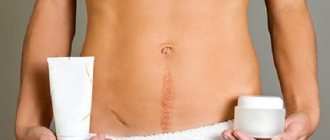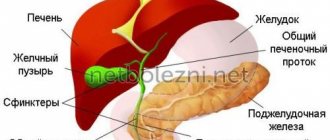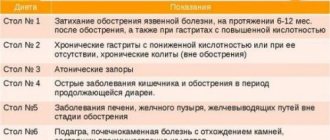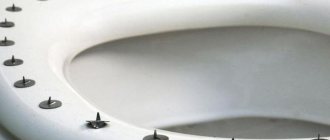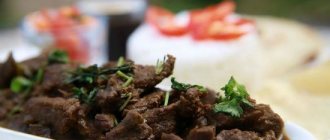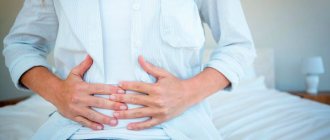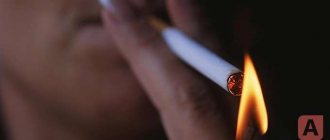Prohibited Products
The attending physician warns you not to eat during the recovery period.
He will advise you to exclude foods that cause increased gas formation (flatulence), intestinal irritation and loose stools, constipation and slow intestinal motility. Prohibited products include:
- sour, coarse-textured, spicy vegetables (tomatoes, cabbage, radishes, radishes, onions, garlic, eggplants, hot peppers);
- milk (cow, goat) and dishes made with milk (porridge, pancakes);
- legumes (chickpeas, peas, lentils, soybeans, beans, green peas);
- sour fruits and berries that cause fermentation (apples, apricots, plums, melon, watermelon, citrus fruits, cherries, grapes);
- fatty meats (goose, duck, lamb, pork);
- fatty fish (trout, salmon, catfish);
- bread (fresh wheat, whole grain, rye), buns, cakes, pies, pastries;
- chocolate, coffee, strong black tea;
- carbonated and alcoholic drinks, natural juices;
- spices and herbs, herbs.
A similar diet is indicated for hemorrhoids and after their removal. The attitude towards it should be unambiguous: a prohibited product is taboo. After two to three months of strict dietary restrictions and after consultation with a doctor, you can gradually, in small quantities, include these foods in your daily menu.
General principles of diet
The diet after surgery to remove hemorrhoids has several general principles, adherence to which will help you correctly adjust the treatment menu and achieve a speedy recovery.
On the first day, you are allowed to drink only clean water without gas. It is recommended to completely avoid eating. Immediately after surgery, stool is undesirable.
Oatmeal is an essential component of a therapeutic diet.
For the next 24 hours, you can eat well-cooked porridge. Oatmeal, barley, wheat will do. It is better to avoid rice and semolina. In addition, the menu after surgery on the second day should include drinking plenty of fluids. The patient is recommended to drink clean water, dogwood compote, chamomile and nettle decoction, green tea without added sugar.
Starting from the third day, nutrition after hemorrhoid surgery is selected by the attending physician or nutritionist, based on the following principles:
- food should be consumed in small portions, trying to do it at the same time;
- All patients are recommended to divide the daily menu into 5 meals;
- It is strictly not recommended to overeat, even if it is healthy food. After a meal there should always be a slight feeling of hunger;
- During the entire recovery period, it is important to give up alcoholic beverages and smoking;
- The diet should be balanced and varied. A person should not lack a particular vitamin;
- the patient should consume at least 3 liters of liquid per day, including liquid cereals and soups;
- To normalize the peristalsis of the stomach and intestines, you need to consume vegetable oils daily. This will help improve the movement of feces through the intestines and make defecation easier.
Important! Even if the patient has a tendency to constipation, laxatives should not be abused. Such drugs often lead to addiction.
Authorized products
To correctly and competently create a menu, you need to know what you can eat. There are not so few permitted products; the diet is quite varied:
- cereals (Hercules oatmeal, barley, wheat, buckwheat, pearl barley);
- low-fat fermented milk products (ryazhenka, kefir, Varenets, yogurt, cottage cheese, soft or hard unsalted cheeses);
- lean meats (beef, chicken, turkey, rabbit);
- low-fat varieties of river and sea fish (pollock, tuna, haddock, carp, pike perch, pike);
- bread (bran, stale wheat);
- vegetables (potatoes, beets, carrots, cucumbers, pumpkin, zucchini, cauliflower);
- fruits (banana, baked apple);
- berries (for making jelly or compote in small quantities);
- drinks (green and black weak tea, jelly, chicory coffee, compote, herbal decoctions);
- dried fruits (for making compotes and infusions).
You can eat all the foods listed, but do not forget about the measures of their consumption. Any of these harmless foods in large quantities can cause intestinal problems.
Approximate menu
You should follow nutritional rules, choose safe products and processing methods.
A few necessary recommendations for preparing and selecting dishes:
- The porridge should be liquid, viscous, and heavily boiled.
- Meat cannot be fried.
- Cook fish in the oven, in a double boiler, in a slow cooker, or cook. In this case, fat cannot be used.
- Vegetables must be heat treated and not fried. It is better to cook in a double boiler, bake, boil. You can return to raw vegetables after a diet by adding them gradually.
- Bread can be eaten with bran, from wholemeal flour, which contains a lot of fiber. Diet bread with fiber is suitable.
It is forbidden:
Nutrition rules
The postoperative menu is prepared by the attending physician.
Medical nutrition and diet must meet the following requirements:
- Normalize stool and prevent constipation. Laxative foods include some vegetables, fruits, and fermented milk drinks. Vegetable oil improves intestinal function;
- Accelerate scar healing. The diet should be rich in proteins, vitamins and substances involved in tissue repair. Lean varieties of meat and fish, cheese, cottage cheese, buckwheat and millet cereals are healthy;
- Eliminate fermentation and gas formation processes. This problem will be solved by limiting the diet of legumes, cabbage, whole milk, black bread, nuts, eggs, carbonated drinks;
- Be gentle on the intestines and damaged tissues. Fatty, fried, smoked, pickled, and spicy foods irritate the digestive system.
It is important to maintain regular meals. In order not to overload the intestines, you need to eat often, but in small portions. Ideally, you should aim to eat 5-6 times a day. Cooking food is worth steaming. It is better to boil or stew.
How to prevent hemorrhoids and surgery?
To prevent this disease from occurring in your intestines, you must follow simple rules:
- Healthy food;
- move a lot;
- do not be nervous;
- do not overeat;
- do not overwork;
- be in the fresh air more often;
- experience positive emotions.
Then hemorrhoids are unlikely to force you to see a doctor. And if you still feel some discomfort during bowel movements, then contacting a doctor is the basis for getting rid of the disease in a short time and without discomfort and pain. And proper nutrition is the key to successfully getting rid of hemorrhoids.
Nutrition after the end of the postoperative period
A month after removal of hemorrhoids, the postoperative wound heals, patients are advised to gradually switch to an expanded menu. New dishes are introduced slowly, after the person is convinced that they do not provoke constipation, diarrhea, or flatulence. The menu should be comprehensive, diverse, complete in terms of the range of products in terms of the content of vitamins and microelements. Each fish or meat dish is complemented with a side dish of boiled, stewed or baked vegetables.
Food is steamed, baked, stewed or boiled. This method of preparation is recommended for lifelong hemorrhoid patients. Vegetables, fruits and berries can be consumed in any form. Priority is given to fresh and dried vegetables and fruits, cereals and grain bakery products, and fermented milk drinks.
- Diet for arthrosis of the knee joint. How and what to eat so as not to starve
If complications arise after ligation of hemorrhoids
Despite the fact that the procedure for removing hemorrhoids is minimally invasive and safe, complications may occur after ligation. Most often they appear as a result of non-compliance with doctor’s recommendations and manifest themselves in the form of:
- Bleeding - as a result of injury to the node with feces or rejection of the pathological element;
- Discomfort in the rectal area (pain, irritation, feeling of pressure) - involvement of healthy tissues in the pathological process;
- Thrombosis of hemorrhoids - an error when performing ligation not on internal, but on external formations;
- Anal fissure - due to failure to use the toilet after ligation, which must be performed twice a day;
- Acute paraproctitis - the addition of a secondary infection due to injury to the hemorrhoidal node by solid intestinal contents;
- Recurrence of hemorrhoids;
- Spontaneous slipping of the latex ligature is increased physical effort due to lifting weights or pushing during bowel movements.
The most common complication when removing hemorrhoids is bleeding. The appearance of blood between acts of defecation after ligation is a negative symptom, indicating a complication that has arisen for any reason and requires mandatory consultation with a proctologist.
The most serious and dangerous is the first week after ligation, when the ring with the node comes off. Further, the likelihood of bleeding decreases significantly. Elimination of this frequent complication is carried out by prescribing conservative treatment, in the form of hemostatic suppositories, painkillers or electrocoagulation of the vessel.
Should ligation of hemorrhoids be performed as the disease progresses?
Proctology answers - definitely yes, in the absence of contraindications. This safe manipulation is guaranteed to eliminate the symptoms of hemorrhoids for an average of 4-6 years. If you follow all the doctor’s recommendations (diet, dosed physical activity, avoidance of bad habits), this period can increase to 7-8 years or more. Make an appointment
Technique for performing hemorrhoidectomy
Since the Milligan-Morgan operation is not a cavity intervention, the technique of the selected modification of hemorrhoidectomy should guarantee the patient comfort, effectiveness and safety. The operation algorithm involves the following steps:
- Anesthesia. Anesthesia for hemorrhoidectomy is selected individually. Most often, general or epidural anesthesia is used, sometimes local and general anesthesia are combined, which allows the manipulation to be performed in a hospital for one day. The following are taken into account: the patient’s age (elderly – general anesthesia is assumed), injuries to the pelvis and spine (epidural anesthesia is not possible).
- Premedication. A catheter is inserted into a vein to supply low-toxic painkillers to the patient, and sensors are connected to measure blood pressure, heart rate, respiratory rate, and oxygenation. Then, the trachea is intubated and the depth of breathing is monitored.
- Choosing a pose. Domestic surgeons prefer to perform a hemorrhoidectomy on a patient when he lies on his back with bent, fixed legs (as on a gynecological chair) - the Trendelenburg position, which complicates blood circulation, but is convenient for the doctor and the patient (in the West they operate on the patient when he lies on his stomach so that By the blood flow to the nodes, you can accurately see their location).
- The next step is to examine the rectum sphincter with a special medical mirror to determine the exact location of the hemorrhoids.
What can you eat on the second day after surgery?
On the 2nd day of the postoperative period, you are allowed to drink the following drinks (without adding sugar to them):
- weakly brewed green tea;
- herbal tea (mint with chamomile, chamomile with nettle and lemon balm)
- apple decoction
In the late afternoon, with the permission of the attending physician, you can have porridge cooked in water (wheat, barley or oatmeal). Porridges should have a liquid consistency and be well boiled. Adding sugar, milk and butter (butter or vegetable) to them is strictly prohibited. If the patient cannot eat unsweetened porridge, it can be slightly sweetened with one teaspoon of fructose or honey.
Progress of hemorrhoidectomy according to Milligan-Morgan
They sequentially remove hair from the surgical field, inject the anus with an anesthetic, dilate it, disinfect the mucous membrane, and dry it with tampons.
Internal hemorrhoids are grasped and removed clockwise at the 3,7, 11 o'clock position. First, the stem of each node is sutured, then the lump is cut off using a cauterizing, ultrasonic or laser knife. The wound is treated in accordance with the modification. A turunda soaked in a special ointment is left in the anal canal for 6 hours. Rarely (due to pain and urinary retention) rectum tamponade is performed. Usually, to prevent narrowing of the anus, special dermal bridges are left in the wound.
Since the Milligan-Morgan operation is traumatic, a fairly long recovery is required. This is a minus. And a plus is the possibility of simultaneous (or alternate) removal of both internal and external hemorrhoids.
Hemorrhoidectomy according to Fergusson
differs in that at the final stage of the operation, catgut is used in a radial direction from the edges of the rectal passage. This ensures rapid wound healing and minimizes complications;
Operation Parkes
– the mucous membrane remains intact, only the area above the node is dissected, which is removed, and the mucous membrane is fixed.
Whether or not complications develop after surgery largely depends on the rehabilitation period.
When should you sound the alarm?
You may suspect hemorrhoids if:
- you are concerned about itching, general discomfort, a feeling of a foreign body in the anus;
- discharge of various types appeared - purulent, bloody, mucous;
- you have discovered nodes or tumors protruding from your anus;
- often there is a urge to defecate, which ultimately turns out to be “false”;
- you suffer from frequent diarrhea or constipation (especially if they have nothing to do with your diet);
- There is dark blood in the stool.
In principle, the presence of even one or two of the listed symptoms is a significant reason to consult a specialist doctor.
If you have discovered some of your symptoms and decide to visit a doctor, you need to know which doctor to go to. Hemorrhoids are usually treated by proctologists - doctors who specialize specifically in diseases of the rectum. Such a narrow specialization allows doctors to “evaluate” diseases from different angles and be able to choose the right treatment regimen in various cases, even in the presence of a large number of contraindications in patients.
Additional recommendations
For a quick recovery during rehabilitation after surgery, the patient should adhere to the following recommendations:
- food and drinks should not be too hot or cold, this will negatively affect the digestion process. It is better to eat food warm;
- It is important to avoid any drinks during meals. This will lead to the fact that gastric juice will be diluted, which means that food will be less digestible. It is better to drink half an hour before or 30 minutes after meals;
- After a meal, you should not immediately engage in physical work or, conversely, lie down.
By following simple recommendations and adhering to a therapeutic diet, you can speed up the process of postoperative wounds, prevent recurrence of hemorrhoids, and quickly return to a full lifestyle.
